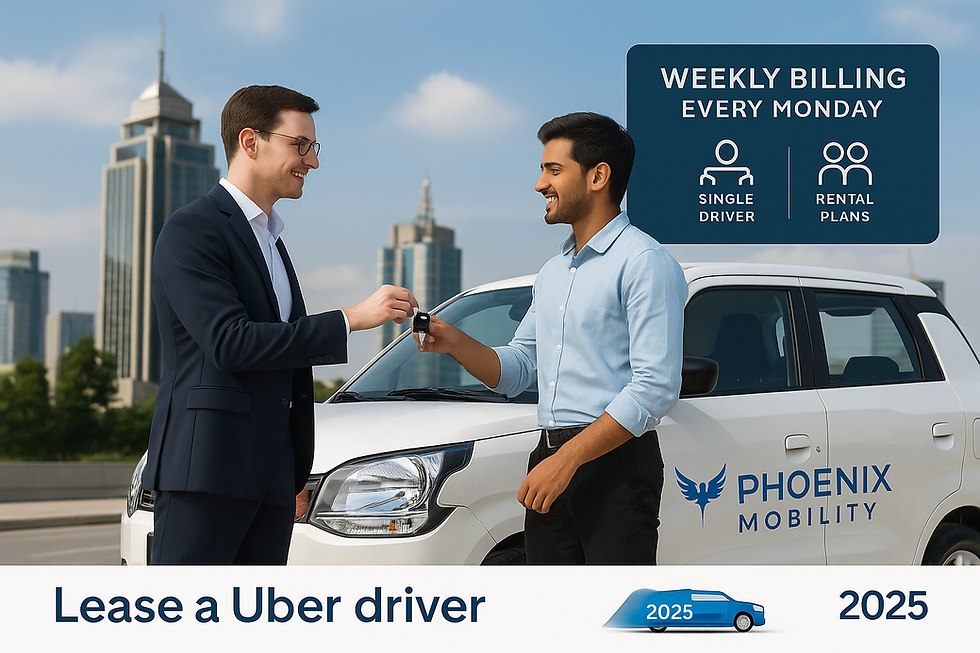Streamlining Workplace Transportation for Efficiency
- jaswanthavalaoffic
- Jun 21
- 4 min read
Updated: Jul 14
Efficient workplace transportation is crucial for enhancing productivity and employee satisfaction in any corporate environment. With the rising costs of commuting, many businesses are looking for innovative solutions to streamline transportation. Finding the right balance between cost-effective and reliable transportation options can make a significant difference in daily operations. In this blog, we'll dive deep into how you can make corporate commuting more efficient, improve employee morale, and ultimately boost your bottom line.
The Importance of Corporate Commuting
Corporate commuting refers to how employees travel to and from their workplaces. This process can have a profound impact on overall efficiency, employee satisfaction, and productivity. A streamlined commuting process not only saves time but also reduces transportation costs for both the company and its employees.
Challenges in Current Commuting Systems
Many organizations struggle with inconsistent employee transportation services, resulting in delayed arrivals, congestion, and employee dissatisfaction. According to the U.S. Department of Transportation, 20% of employees are regularly late due to commute-related issues. When these issues go unaddressed, they lead to reduced efficiency and high attrition rates.
In fact, a Gallup study found that employees with frustrating commutes are 50% more likely to seek other jobs. This makes solving commuting inefficiencies a key part of talent retention.

Innovative Corporate Commuting Solutions
To tackle the challenges of corporate commuting, companies can implement innovative solutions that enhance transport efficiency and employee satisfaction.
Flexible Work Hours
One way to improve corporate commuting is by offering flexible work hours. Employees can choose to start and end their workdays outside of peak traffic hours, reducing the time they spend on the road. This simple change can significantly alleviate employee stress and contribute to a healthier work-life balance.
Shuttle Services
Another effective strategy is establishing shuttle services from key locations to the workplace. By providing shuttles at designated stops, companies can reduce the number of vehicles on the road, ease parking pressures, and promote a communal commuting experience. A study published in the Journal of Urban Planning & Development indicates that shuttle programs can reduce single-occupancy vehicle trips by up to 40%.
Carpooling Initiatives
Encouraging employees to carpool is another effective method for streamlining corporate commuting. Companies can create a platform that facilitates connections between employees living in similar areas, making it easier for them to share rides. Not only does carpooling decrease traffic congestion, but it can also lower transportation costs for employees.
Biking and Walking Options
Promoting biking or walking as alternative forms of transport can further streamline commuting. Companies can invest in bike lanes, secure bike parking, and shower facilities for employees who bike to work. According to a report from the Mineta Transportation Institute, promoting bike commuting can lead to a significant reduction in vehicle traffic, ultimately benefiting the entire community.

Integrating Technology in Corporate Commuting
In the digital age, technology plays a vital role in enhancing corporate commuting. Below are some effective technological solutions:
Rideshare Apps
Utilizing rideshare applications can significantly simplify transportation for employees. Many companies have partnerships with rideshare services, allowing employees to book rides to and from work easily. Some businesses even subsidize the costs, ensuring employees have access to affordable transportation.
Real-time Tracking Systems
Implementing real-time tracking systems allows companies to monitor and optimize transportation efficiency. For instance, GPS tracking can help organizations manage shuttle services effectively. This ensures that employees are not left waiting for extended periods and can plan their travel accordingly.
Transportation Management Software
Adopting sophisticated transportation management software can streamline the entire commuting process. These systems can analyze data related to employee commuting patterns, enabling organizations to identify trends and optimize available resources. By using data-driven decision-making, companies can develop tailored mobility solutions that meet their unique needs.

Employee Engagement in Transportation Solutions
For any commuting strategy to succeed, employee engagement is vital. Here are two ways organizations can enhance employee involvement in transportation solutions.
Surveys and Feedback
Regularly conducting surveys can help companies understand their employees' commuting preferences and pain points. The feedback collected can be analyzed to refine existing transport options or develop new initiatives. An engaged workforce will feel valued when their opinions drive change.
Incentives for Participation
Offering incentives is a powerful way to encourage participation in commuting programs. Companies might offer discounts for ridesharing or biking, or even implement “commuter of the month” recognition programs. Incentives not only encourage employees to choose more sustainable commuting options but also foster a sense of community among employees.
Measuring Success
Lastly, it is essential to measure the success of implemented commuting strategies. Tracking metrics such as employee satisfaction, commuting times, and participation rates in transportation programs will give companies insight into what's working and what areas need further enhancement.
The Future of Corporate Commuting
Forward-thinking companies are embracing sustainable transport, such as electric vehicles and multimodal commuting strategies. Remote work, combined with green mobility options, will define tomorrow's workforce transportation.
By investing in reliable employee mobility services, companies not only reduce environmental impact but also appeal to eco-conscious talent and strengthen their employer brand.
The future of corporate commuting is not only about getting employees from point A to point B but creating an efficient, transportation-friendly workplace that prioritizes employee well-being and satisfaction.
By embracing innovative strategies, leveraging technology, engaging employees, and measuring success, organizations can maximize transportation efficiency and pave the way for future growth.
Incorporating streamlined transportation methods is more than just a logistics improvement; it’s a commitment to the overall well-being of employees. The actions taken today can enhance happiness, engagement, and retention, ultimately benefiting the entire organization.




Comments